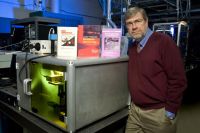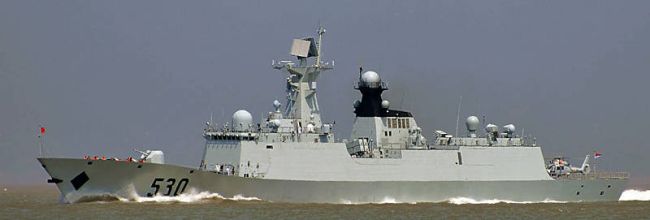ADELPHI, Md. — As the need for chemical, biological and explosive detection becomes more relevant in today’s world, the U.S. Army Research Laboratory is leading the effort in laser-induced breakdown spectroscopy, which is capable of highly advanced materials analysis.
The technology has shown significant advancements since its inception in the 1980’s. Today, LIBS technology is used for multiple purposes, including the 2011 mission to Mars, detection of chemical, biological, radiological, nuclear, and explosive material, and materials matching in forensic cases.
Dr. Andrzej Miziolek and his collaborators in ARL’s Advanced Weapons Concepts Branch are at the forefront of standoff detection pertaining to trace amounts of hazardous materials using the LIBS technology. Their work is an important example of applying spectroscopy to difficult problems in chemical analysis.
“One of the many reasons LIBS is so successful is because it combines laser ablation with sample excitation, all in a single laser shot,” said Miziolek. “We have the capability to remove nanograms of material from the surface, whether the material is bulk or a residue. The resultant microplasma emits light which is analyzed by a spectrometer.
“ARL has led the evolution of a new generation of LIBS where we combine single shot spectrum capture with advanced signal processing to identify the material,” he added. “Thus, we analyze each spectrum on the fly, rather than average many spectra. We have one shot to get it right — once the residue is gone, it is gone.”
In 2000, ARL worked with Ocean Optics Inc. to develop a new capability — a broadband high resolution spectrometer which became commercial in 2003. This new spectrometer allows the LIBS system to be sensitive to all chemical elements in the periodic table, as long as their concentration is parts-per-million or higher within the sample. This makes LIBS a very general tool for materials analysis, both benign and hazardous.
According to Miziolek, the LIBS system has the ability to detect all five of the threats in CBRNE, as long as the laser hits the materials directly. “As recently as a decade ago, very few people would have expected that LIBS, which is fundamentally an elemental analysis technology, would be able to identify unknowns of biological origin, let alone to be able to differentiate between pathogenic and non-pathogenic strains of the same bacterium,” he noted.
While commercializing this technology for field applications is a slow process in the U.S., LIBS has grown substantially in Europe. Miziolek serves as a subject matter expert in “stand-off LIBS” in many areas locally and world-wide. A recent advance was his efforts in getting LIBS accepted to the Standardized Equipment List, which is an important step in transferring technology from lab to user through the commercialization process.
The ARL LIBS group includes Drs. Frank DeLucia, Chase Munson, and Jennifer Gottfried, all of whom have been instrumental in generating the data which shows consistent analytical success of 95 percent true positives. They have also pioneered the use of advanced chemometrics, and their work has been adopted by many other LIBS laboratories world-wide.
“The best is yet to come with LIBS,” noted Miziolek, “with the anticipated commercialization of rugged and user-friendly field devices in many different form factors including standoff, close-contact, robotic-mounted and underwater systems”.
The attributes of LIBS are compelling, including real-time analysis, no sample preparation, high sensitivity and high specificity. The recent development of real-time signal processing software has made one-second analysis a reality.
Source:
Army Research Laboratory Public Affairs br/> U.S. Department of Defense
Office of the Assistant Secretary of Defense (Public Affairs)

 von
von 
